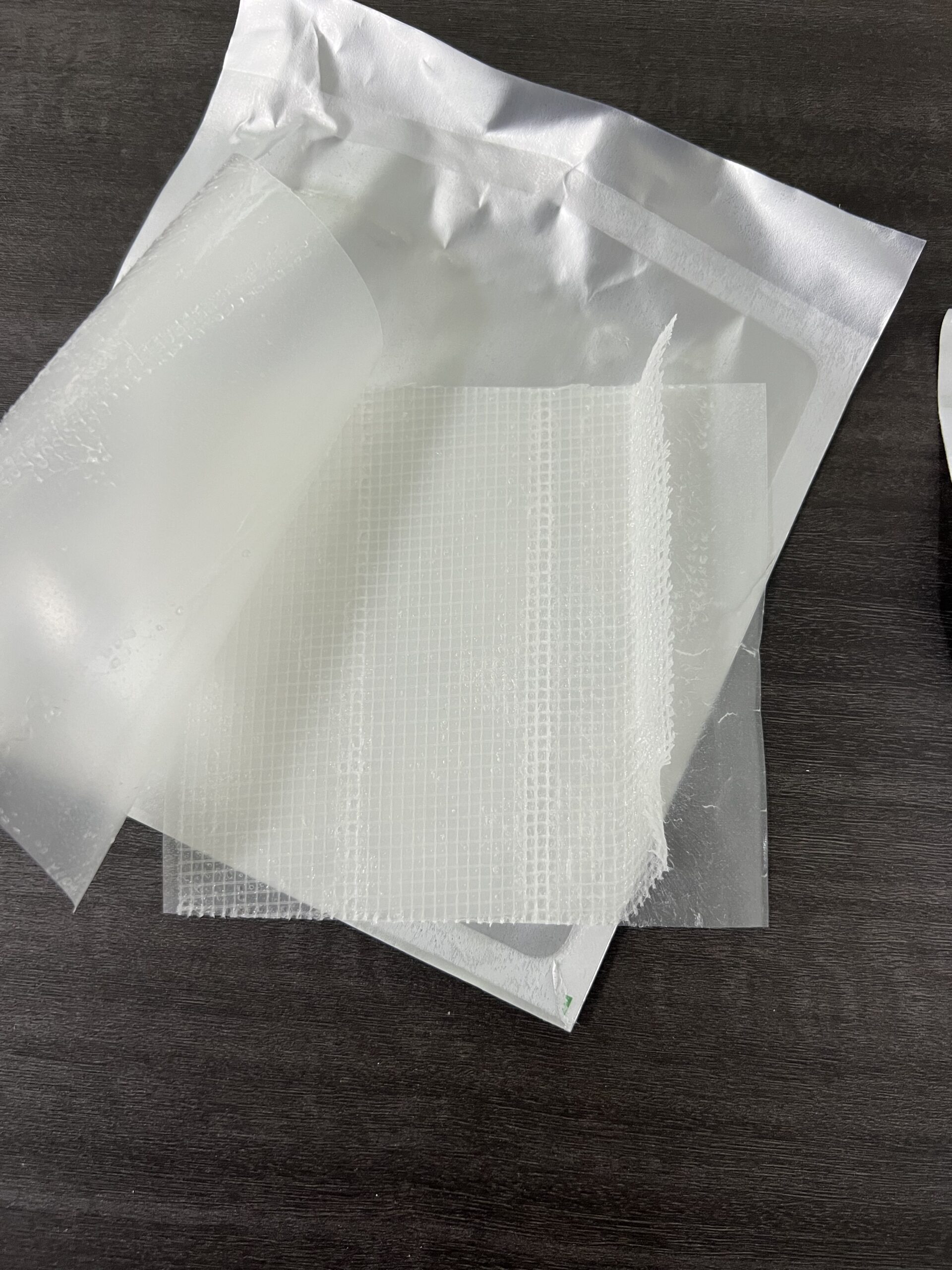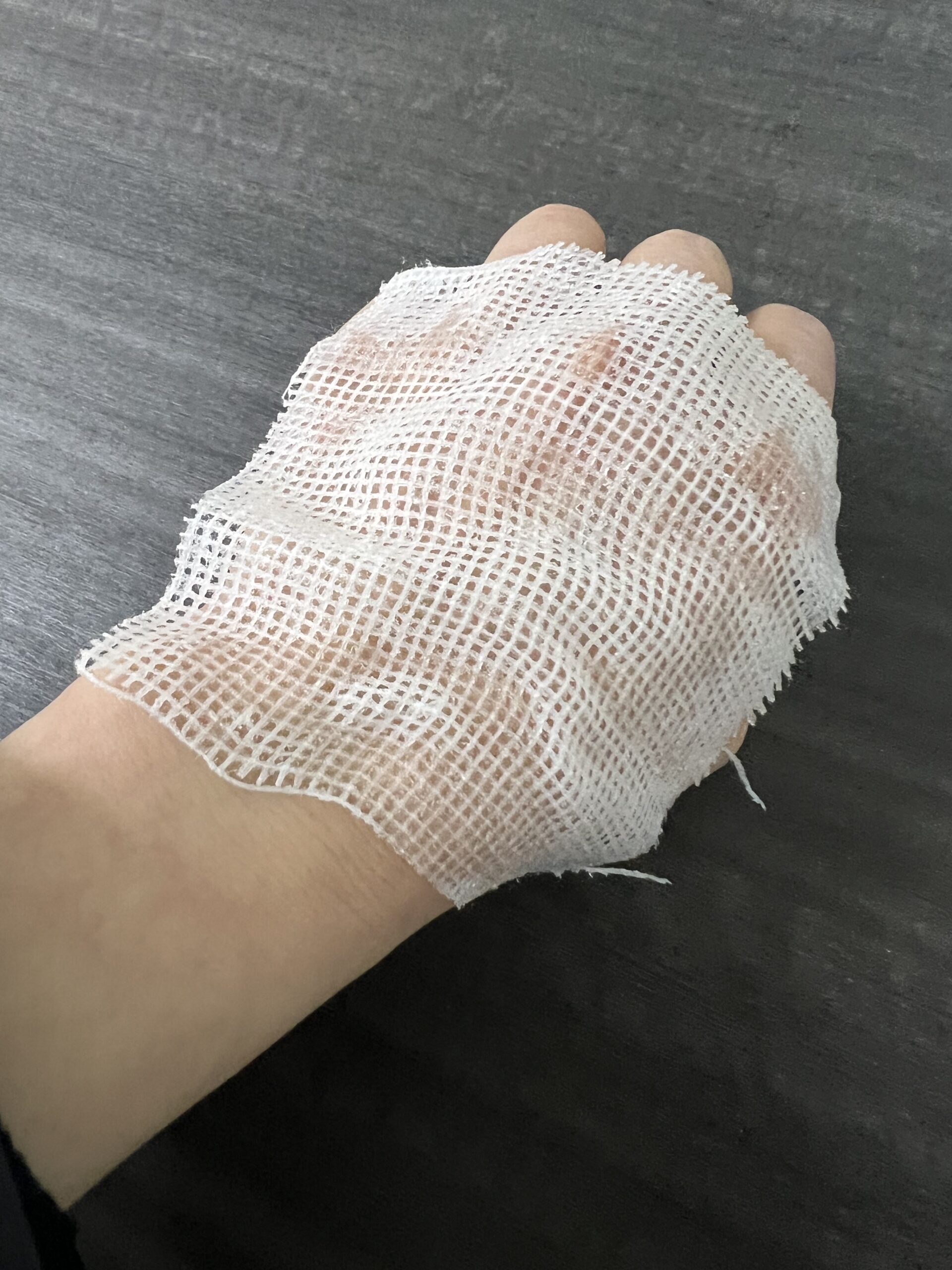Paraffin gauze dressing has revolutionized the way that pain and healing are managed during wound care. This straightforward and efficient non-adherent paraffin gauze lessens discomfort during dressing changes. Its oily coating keeps the wound moist, promoting a quicker healing process with less discomfort. Patients feel less pain, and there is a much lower chance of reopening sensitive tissue.
Working with a reputable wholesale gauze supplier offers clinics and hospitals consistent quality and dependability. Paraffin dressings are less uncomfortable for patients and promote a cleaner, more seamless healing process than traditional gauze.
In this article You’ll discover why paraffin gauze dressing is a true game-changer for painless wound care. We’ll examine its healing benefits, compare it to conventional gauze, and take you through how to use paraffin gauze dressing correctly.
Why Paraffin Gauze Dressing Is Preferred for Painless Wound Care
Paraffin gauze dressing is a game-changer, unlike ordinary gauze in terms of comfort and recuperation. Conventional gauze frequently adheres to wounds, resulting in discomfort and tissue damage upon removal. There are several non-adherent paraffin gauze benefits but its ability to reduce sticking is the main benefit. Its gentle petroleum coating keeps the surface of the wound moist, making changing the dressing painless.
In contrast to conventional dressings, which absorb moisture and rip new tissue, paraffin gauze fosters a soothing environment that promotes healing without causing friction. Additionally, this moisture-locking feature reduces the risk of infection and stabilizes the wound bed while it heals.
Paraffin gauze for burns and ulcers aids in preserving comfort for patients with burns, ulcers,or skin grafts during each healing phase. Because of this, the majority of medical professionals consider it to be the most up-to-date, patient-friendly method of healing management.
Consistent outcomes are achieved by healthcare facilities that purchase from a reliable supplier such as a wholesale Vaseline gauze supplier . Paraffin gauze for burns and ulcers is the obvious choice for painless wound care because material quality has a direct impact on patient comfort, dressing performance, and healing results.
This obvious preference begs the crucial question: what precisely causes paraffin gauze to function so differently? Let’s examine its game-changing role in painless wound care and compare paraffin gauze vs traditional gauze dressing and see what truly sets it apart.
Why Choose Paraffin Gauze Over Others?
The way paraffin gauze dressing and regular gauze interact with the wound is the main distinction between them. Conventional gauze sticks to the surface of the wound because it is absorbent and has a tendency to dry out. Removing it may reopen tissue, resulting in bleeding and excruciating pain.
The paraffin gauze dressing game-changer design, on the other hand, applies a thin coating of petroleum to the wound to keep it moist and stop it from sticking. This non-adherent dressing is one of the best, especially for wounds that need to be dressed often, like burns or ulcers.
Regular gauze soaks up exudate quickly, but paraffin gauze keeps just the right amount of moisture for clean healing. It cuts down on friction, tearing, and secondary trauma, which are all problems that can happen with dry cotton dressings. The outcome is a more comfortable and quicker recovery.
Clinicians also prefer paraffin gauze over traditional gauze dressing for controlling infections. The moisture barrier keeps bacteria from getting in and helps new tissue grow. For patients, this means that they won’t have to take off their dressings as often and they will see their wounds heal faster.
Hospitals that rely on a wholesale gauze supplier often see the same level of care for all of their patients. It is easier to keep high standards of painless wound care when you can count on a steady supply and quality control paraffin gauze manufacturing.
Now that you know what makes paraffin gauze different from other types, it’s time to learn how to use paraffin gauze dressing correctly. The right technique makes it more comfortable and less painful.
How Do You Use Paraffin Gauze Dressing Correctly?
To get the best healing results and pain-free care, it’s important to put on paraffin gauze dressing correctly. Unlike traditional gauze dressing, paraffin gauze dressing focuses on protection, keeping the tissue moist, and making it comfortable.
1. Clean the wound with care
Use a cleaning solution that has been approved or a mild saline solution. Don’t use strong antiseptics that make the wound bed dry out. When you use regular gauze, it can dry out wounds too much. With paraffin gauze, you want to keep the moisture in.
2. Get the paraffin gauze ready
Get a clean, non-adherent paraffin gauze out of its pack. Make sure it completely covers the wound and overlaps the edges a little to protect them. The soft, petroleum coating keeps the dressing from sticking and tearing when it is taken off.
3. Use it safely and without problems.
This is the safe application of paraffin gauze on infected wounds. Put the dressing directly on the wound. Don’t pull on it or push it down. It lets oxygen flow while keeping moisture, which regular gauze can’t do.
4. Put on a second layer of absorbent material.
Put sterile, dry gauze or a pad over the paraffin gauze to soak up any extra fluid. Use light bandaging to hold it in place without putting too much pressure on it.
5. Change when needed.
You should change the dressing every one to three days or when it gets too wet. Paraffin sheets are different from regular gauze in that they come off easily without pulling on new tissue, which cuts down on pain and bleeding.
This step-by-step guide is what makes it a game-changer for paraffin gauze dressing. It cuts down on dressing time, discomfort, and keeps healthy tissue alive something that regular gauze can’t do all the time. Let’s move on to the next part, where we’ll talk about the best times to change your dressing and the most important signs that it’s time for a new one.

Signs of Wound Healing Properly
Knowing the signs of wound healing correctly can help you keep track of how things are going. When you learn how to take care of wounds with gauze, it becomes easy to see these signs of healing. Five signs that the healing process is going well are:
Less Pain and Swelling
As the healing process goes on, the pain and swelling should get better. If the pain gets worse instead, it could mean an infection or poor dressing.
Formation of New Tissue
When pinkish tissue appears around the wound, it means that new skin is forming, which is an important part of healing the wound.
Minimal Discharge
It’s normal to have a little clear fluid. But if the discharge is thick or colored, it’s time to go over the wound care step-by-step guide again.
Lessening Redness
A little redness at the edges is okay, but redness that spreads could mean irritation or bacteria growth.
Scab Formation and Closure
The wound should eventually dry, scab, and close on its own without too much crusting or oozing.
Knowing these signs of healing will help you keep your wound dressing right with gauze and avoid problems that aren’t necessary.
It’s just as important to know when things are going wrong as it is to know how to tell when a wound is healing properly. Next, we’ll talk about common mistakes people make when caring for wounds that slow healing and how to avoid them.
Common Mistakes to Avoid in Wound Care
Even if you know how to use paraffin gauze dressing correctly, small mistakes can make the wound take longer to heal or even get infected. Knowing what not to do is just as important as knowing the right way to care for a wound. Here are the most common mistakes to look out for:
Putting cotton directly on open wounds
Cotton fibers can get stuck in the wound, making it take longer to heal and raising the risk of infection. Always use a sterile pack to dress a wound the right way.
Not changing the gauze often enough
Knowing how often to change the gauze keeps the wound clean and stops bacteria from building up.
Not cleaning properly
Using strong antiseptics or not cleaning at all can hurt tissue or trap bacteria. Use a mild saline solution and pat dry gently.
Covering too tightly
Wrapping the wound too tightly can stop blood flow, while a loose dressing lets in germs. Make sure the gauze is tight but not too tight.
Not paying attention to early signs of infection
If the wound is red, swollen, or has pus, it isn’t healing right. At this point, you should always check your wound care routine again.

How Does BKA MED Ensure the Quality of Its Paraffin Gauze Dressing?
The quality of the materials you use has a big effect on the results you get when caring for wounds. Clinics, hospitals, and even people who care for patients at home need reliable, medical-grade gauze that works well every step of wound care. That’s when working with a reliable supplier makes a big difference.
BKA MED is a reliable supplier that guarantees that the gauze will always have the same texture, absorbency, and sterility. This makes sure that each dressing helps with proper wound dressing with gauze, keeps things clean, and follows the best medical standards. You’re not just buying gauze with BKA MED, you’re also investing in patient safety, faster healing, and lower costs.
Reliable suppliers also help you keep your inventory steady, so you never run out during times of high demand or emergencies. This is especially important when dealing with delicate procedures that require sterile wound care products for deeper cuts or surgical wounds.
When you buy gauze rolls or pads from BKA MED, you can be sure that they all meet high quality standards. This consistency gives your care team more confidence and helps patients get better, which is very important in professional wound care.

Conclusion
To get good at using gauze to care for wounds, you need to be precise, consistent, and use the right materials. Every step, from cleaning the wound to putting on the gauze and changing it, is important for proper wound dressing. When done right, you lower the risk of infection, enhance healing, and lessen scarring.
Paraffin gauze dressing for wound care will not only protect the wound, but it will also speed up the healing of the tissue. Keep in mind that consistency is important. Always use clean tools, fresh gauze, and follow the planned dressing schedule.
When clinics and professionals work with a reliable supplier like BKAMED, they can be sure that they will always have access to high-quality control paraffin gauze manufacturing for every procedure. Their products meet international care standards, which helps you give every patient safe, reliable, and effective treatment.
If you practice and have the right materials, you will get better at dressing wounds with gauze. To get the best possible care results, keep improving your skills and get your supplies from reliable sources.


